These salmon cakes are so easy to throw together and don’t require a lot of effort. They are far from dry and have a wonderful flaky texture and flavor. You’ll love how these patties are perfectly golden brown, and every bite you take is filled with salmon and vegetables.
They’re light but filling and will disappear fast off the table as they’re loved by both adults and kids. You’ll want to make extra to enjoy throughout the week. Enjoy these cakes on their own or as part of a meal. Try my easy air fryer salmon recipe or pan seared salmon recipe if you're craving another salmon recipe.
Key Ingredients You Need
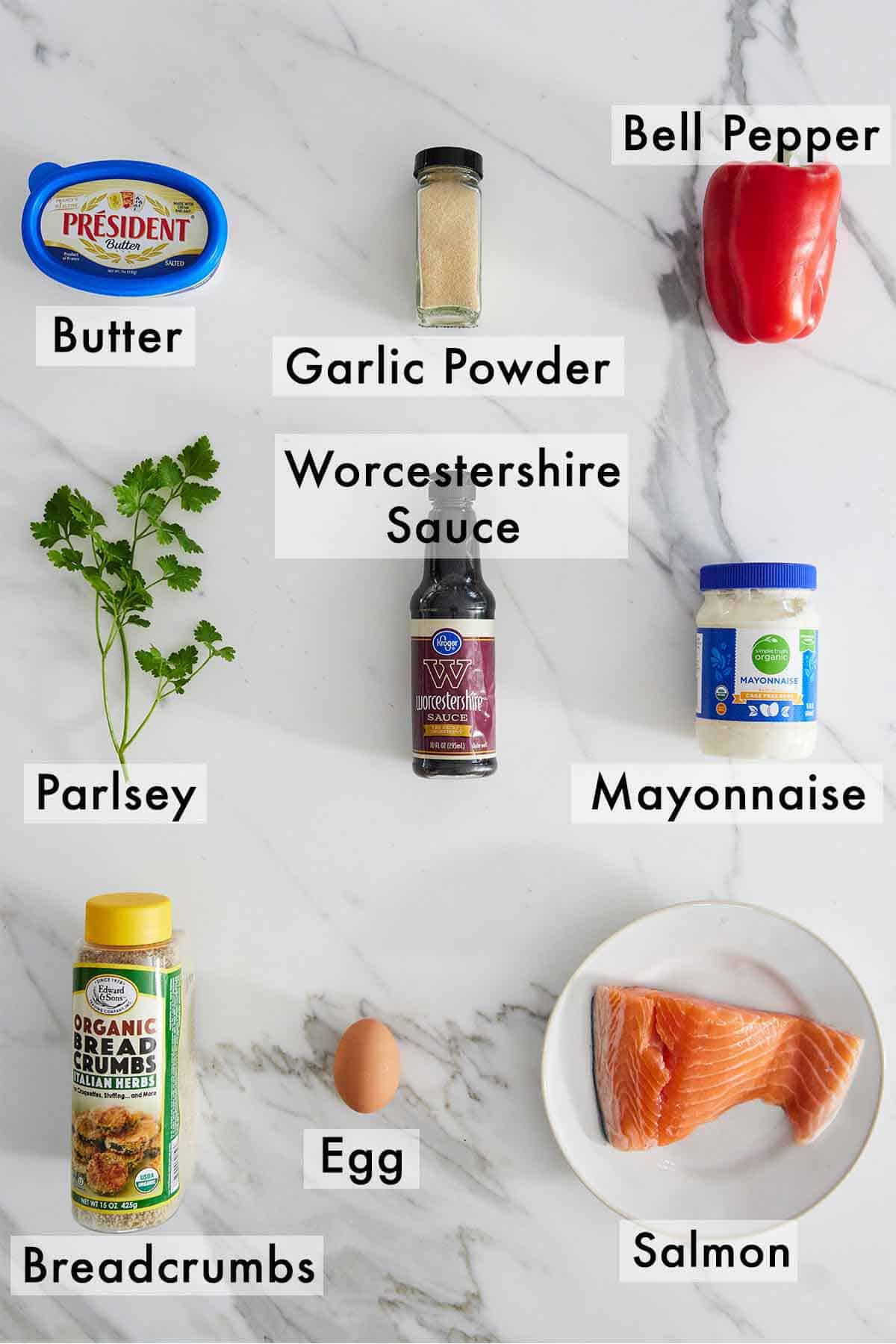
- Salmon — Feel free to use any type of salmon (king, coho, sockeye, Atlantic, etc.) to make salmon cakes. Since you roughly chop the salmon, feel free to buy different-sized fillets or end pieces and pull them out of the oven as they finish cooking.
- Panko breadcrumbs — Use unseasoned panko breadcrumbs as you are already adding seasoning to the cakes. The breadcrumbs lock in the moisture and prevent the cakes from drying out as they cook.
- Mayo — The mayo adds extra moisture to the cakes and helps bind the cakes together alongside the breadcrumbs and egg.
- Egg — You’ll need an egg to help bind the patties together.
How to Make Salmon Cakes
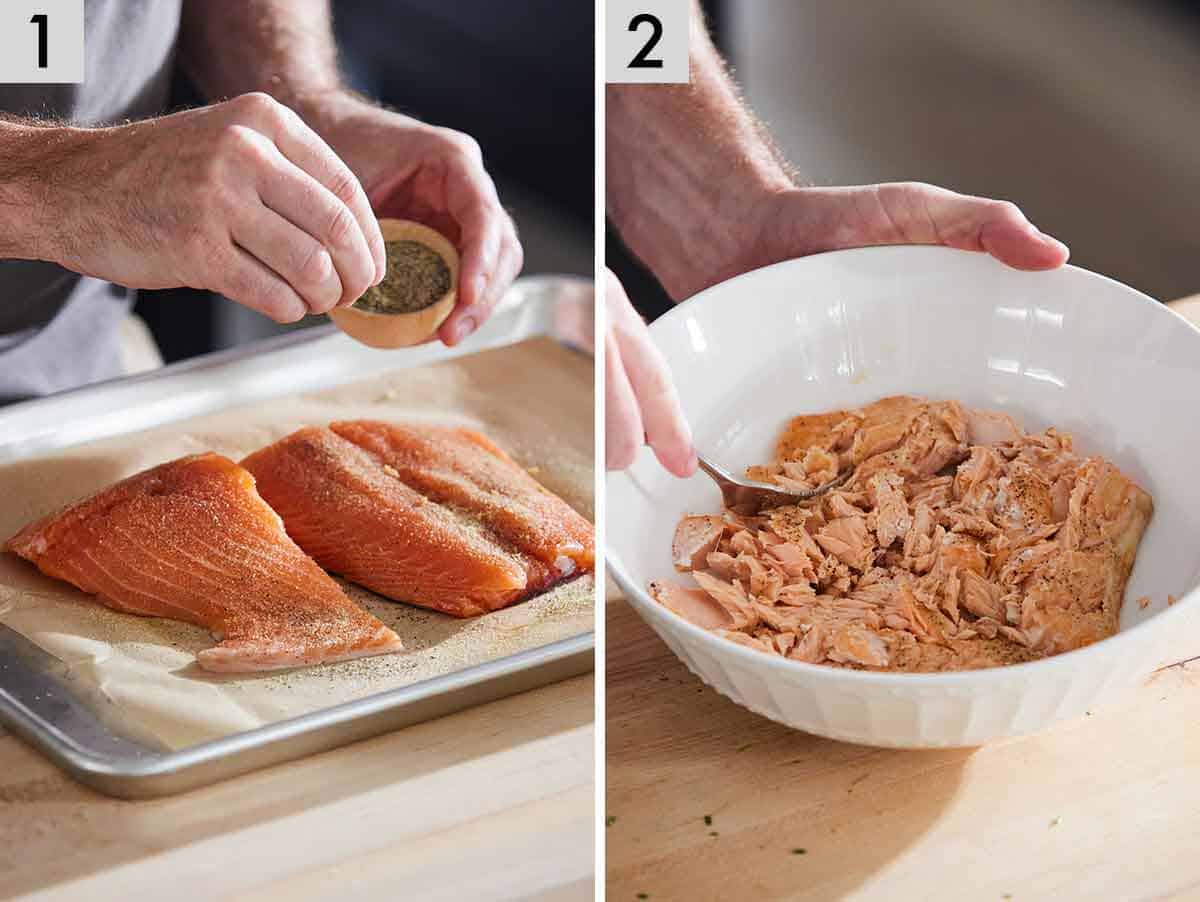
Step 1: Line a baking sheet with parchment paper, place the salmon skin side down, brush with olive oil, and then season with the garlic powder, salt, and black better. Bake for 10 to 15 minutes.
Step 2: Remove the salmon skin and flake the salmon with a fork with a large mixing bowl, remove any bones you see.
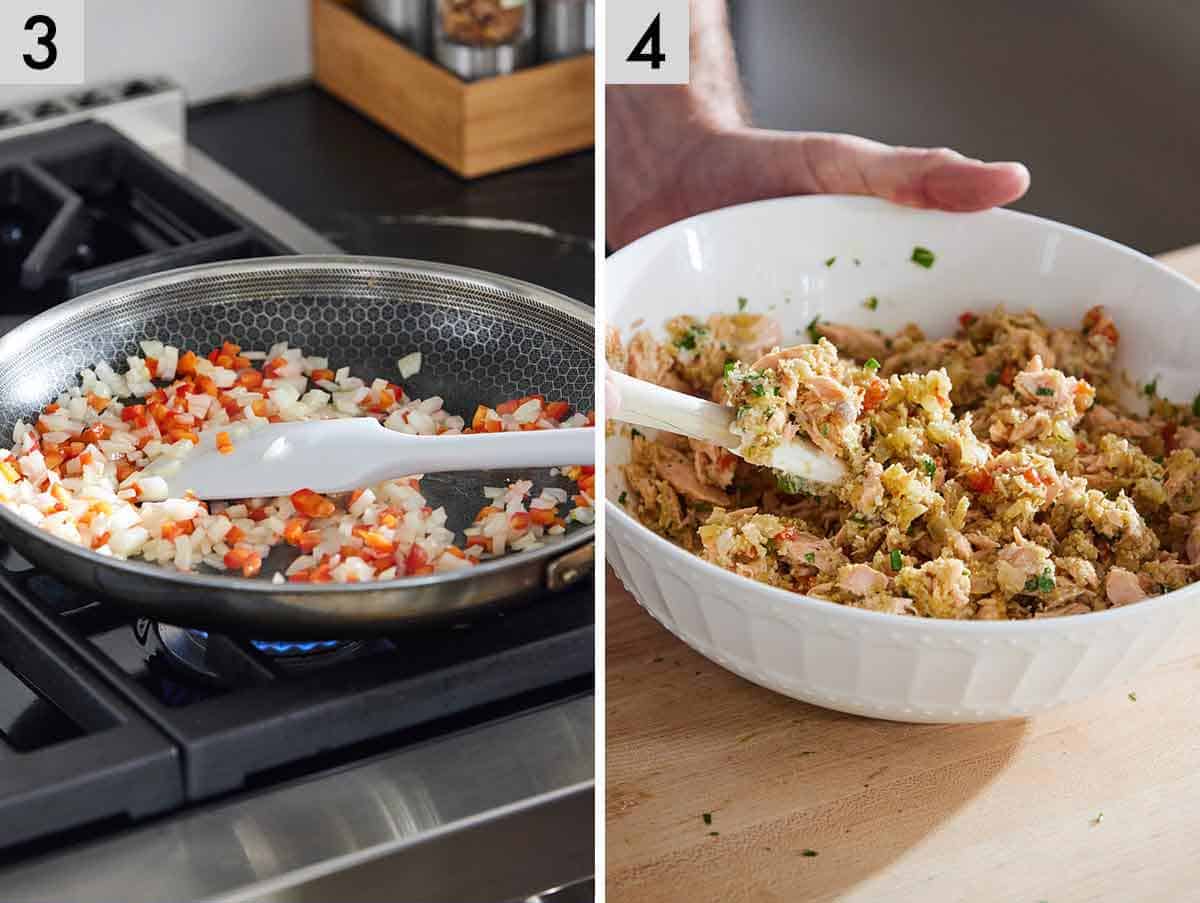
Step 3: Heat a medium pan over medium-low heat and add ½ tbsp of olive oil and 1 tbsp butter. Saute the onion and bell pepper until the onion is slightly translucent and the bell pepper has softened.
Step 4: In the large mixing bowl with the salmon, add the cooked onion, bell pepper, bread crumbs, eggs, mayo, Worcestershire sauce, and parsley. Mix until well combined.
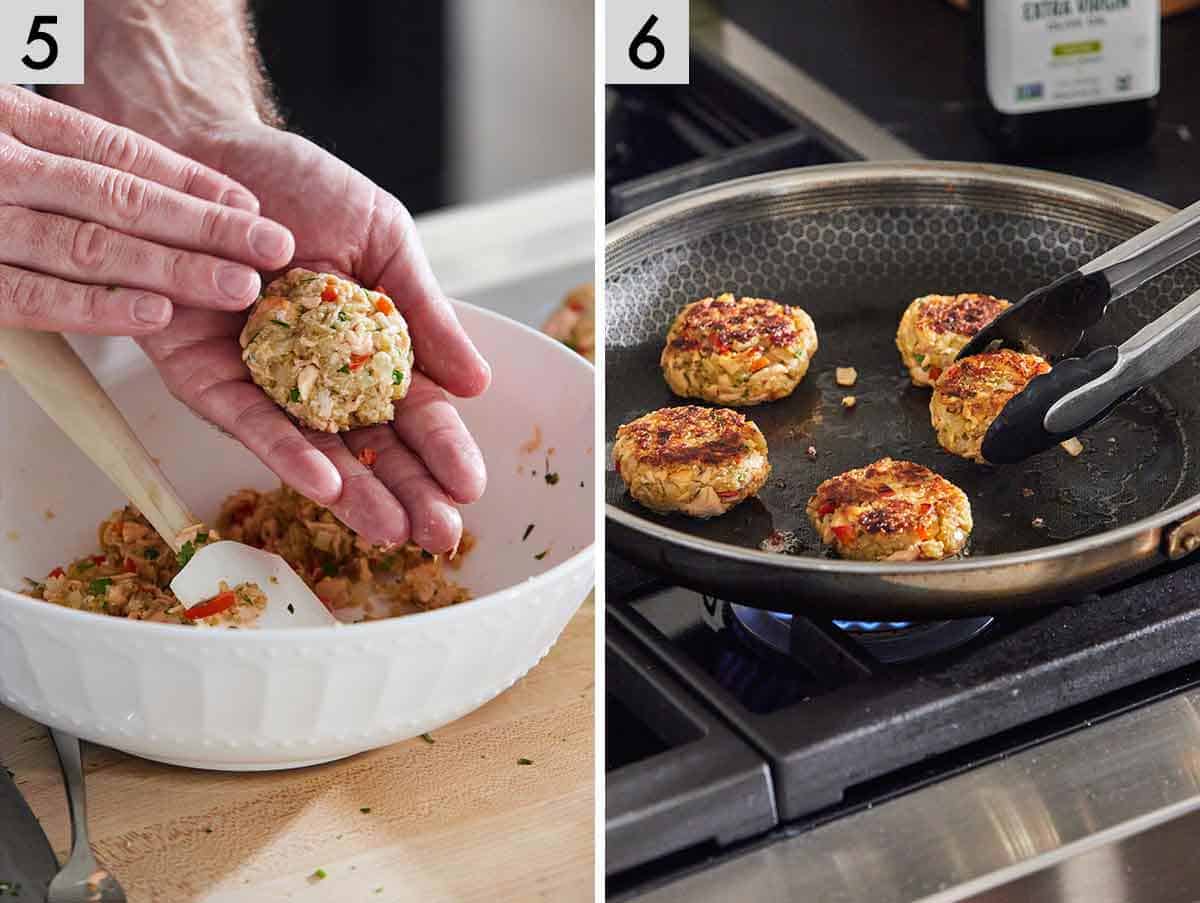
Step 5: Form the salmon mixture into patties about ¾” thick with your hands.
Step 6: In a large skillet or pan, heat 1 tbsp of olive oil and cook the salmon cakes in batches for about 3 to 4 minutes per side. Garnish with your favorite dipping sauce, like tartar sauce.
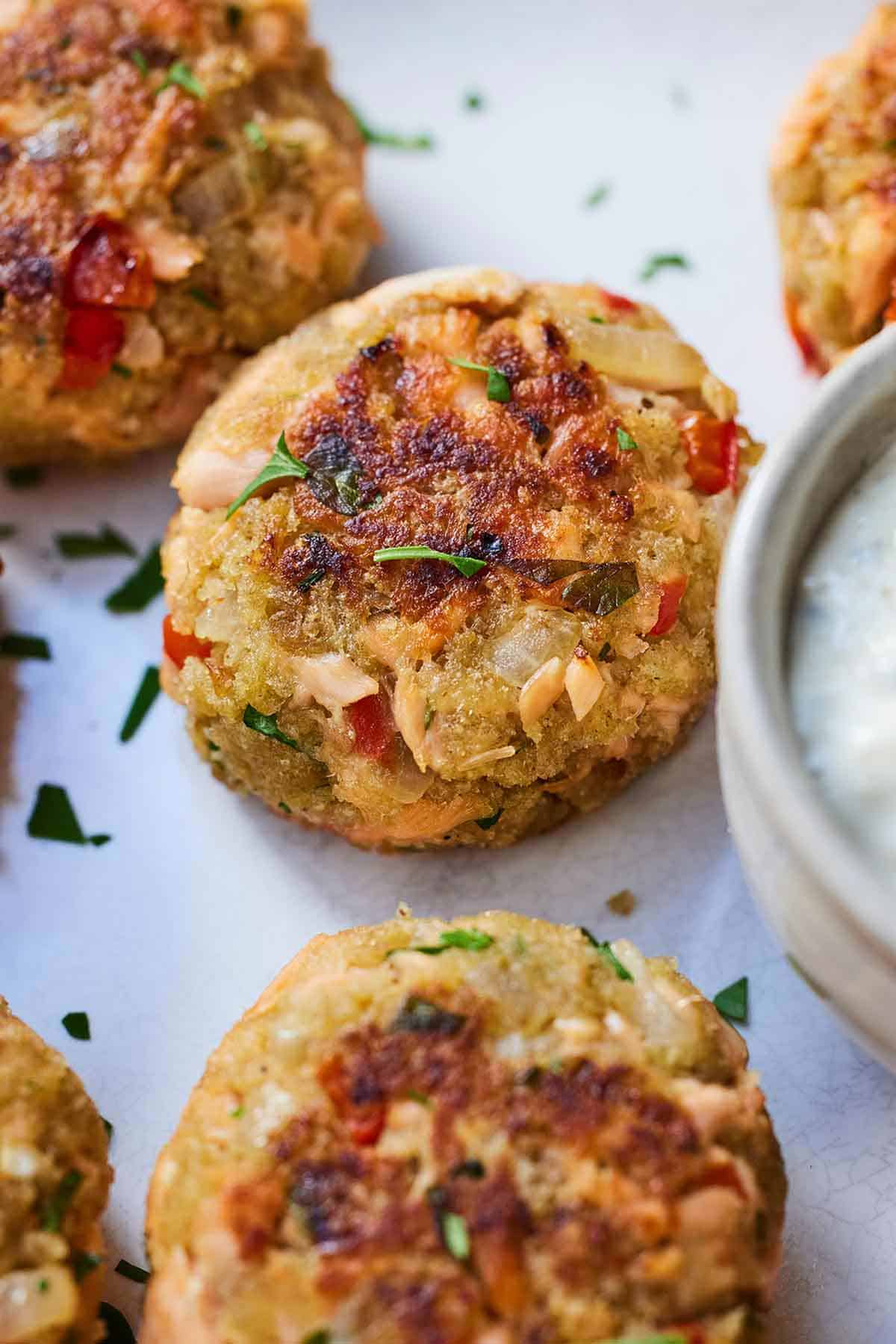
Tips For This Recipe
- Use gluten-free breadcrumbs if you want to make these salmon cakes gluten-free.
- The patties will shrink a bit while they cook, so form the patties a tad bit larger than you want them.
- To ensure the cake mixture sticks together as it pan-fries, make sure your onion and bell peppers are chopped into small pieces. If they are too large, they will have difficulties binding and may fall apart.
- These cakes go well with mayonnaise, aioli, or tartar sauce on the side. Steamed or roasted vegetables or a side salad are great with the cakes as well. They can be served on a bun, slider style as well!
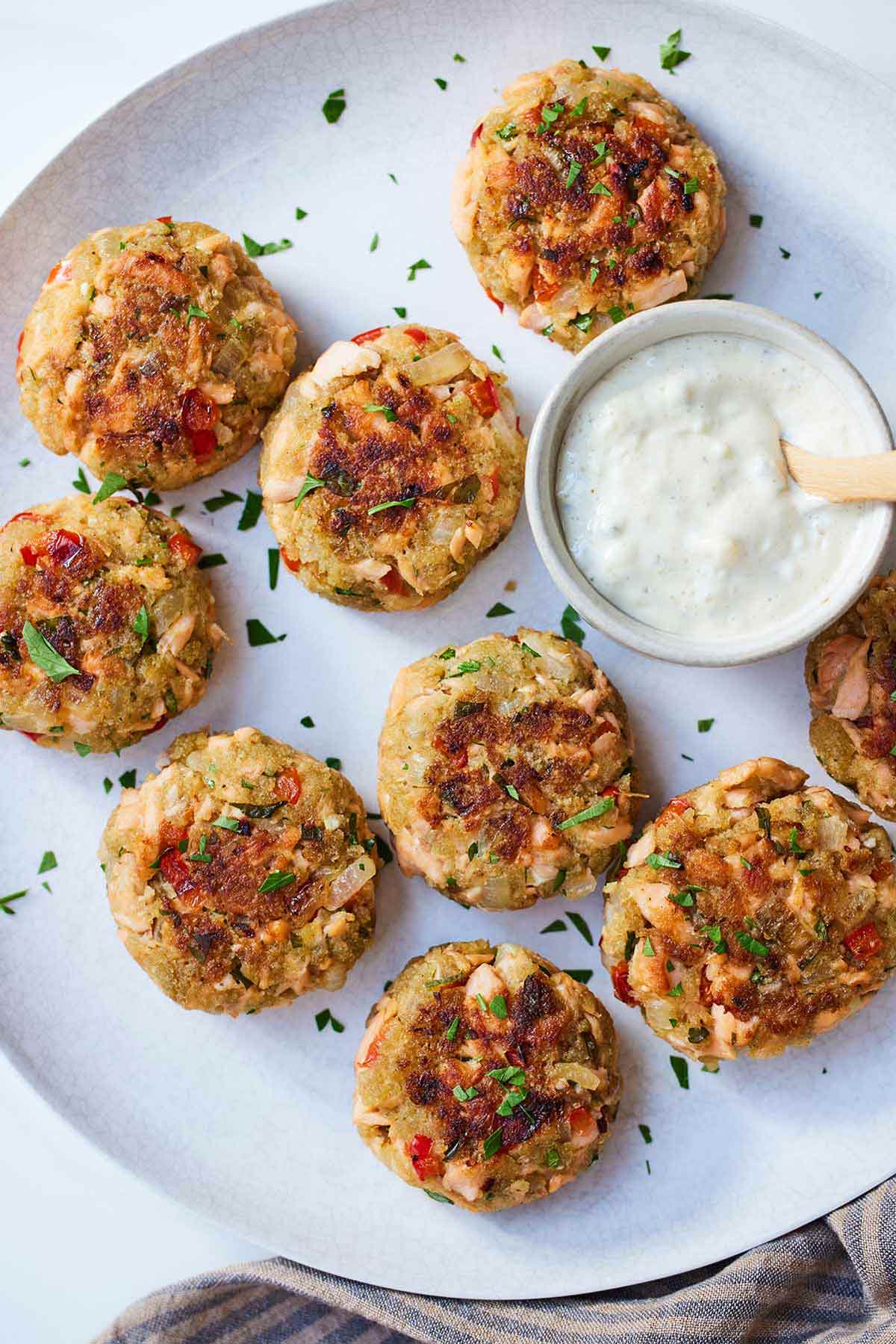
Frequently Asked Questions
While fresh salmon is ideal, you can use leftover salmon or canned salmon instead. If using canned salmon, thoroughly drain the can before using.
Frozen salmon is a very budget-friendly way to get more seafood in your diet, especially if your options for fresh fillets are limited. Make sure to fully thaw the fillets and pat dry before you start working with them, as the moisture will make it difficult for the seasoning to stay on.
You can keep leftover cakes in the fridge, in an airtight container, for 3 to 4 days. You can reheat them in the microwave for a fast meal or enjoy them cold straight out of the refrigerator if you don’t like reheated fish. You can also reheat the salmon cakes in a lightly oiled skillet on the stove to keep them crispy.
You can freeze cooked salmon for up to 3 weeks. Let thaw them in the refrigerator, then reheat them on the stovetop as desired.
If you’ve tried this Salmon Cake Recipe, then don’t forget to leave me a 5 star rating and let me know how it went in the comments below!
Salmon Cakes
Ingredients
- 1 lb salmon
- olive oil
- ½ tsp garlic powder
- ½ tsp salt
- ½ tsp black pepper
- 1 cup onion diced
- ½ cup red bell pepper diced
- 1 tbsp butter divided
- 1 cup panko bread crumbs
- 1 egg beaten
- ¼ cup mayo
- 1 tsp worcestershire sauce
- ¼ cup fresh parsley minced
Optional garnish:
- tartar sauce
Instructions
- Preheat oven to 400 F. Line a baking sheet with parchment paper. With the salmon skin side down, brush with olive oil and then season with the garlic powder, salt, and black better. Bake for 10 - 15 minutes or until salmon is cooked through. Remove from oven and cover tightly in aluminum foil and let rest for 10 minutes. Remove skin and flake salmon with a fork with a large mixing bowl, remove any bones that you see.
- Heat a medium pan over medium-low heat and add ½ tbsp of olive oil and 1 tbsp butter. Saute the onion and bell pepper until the onion is slightly translucent and the bell pepper has softened. Set aside.
- In the large mixing bowl with the salmon, add the cooked onion, bell pepper, bread crumbs, eggs, mayo, Worcestershire sauce and parsley. Mix until well combined. Form the salmon cakes into patties about ¾” thick.
- In a large skillet or pan, heat 1 tbsp of olive oil and cook the salmon cakes in batches about 3 to 4 minutes per side.
- Garnish with your favorite dipping sauce like tartar sauce.
Video
Notes
- Use gluten-free breadcrumbs if you want to make these salmon cakes gluten-free.
- The patties will shrink a bit while they cook, so form the patties a tad bit larger than you want them.
- To ensure the cake mixture sticks together as it pan-fries, make sure your onion and bell peppers are chopped into small pieces. If they are too large, they will have difficulties binding and may fall apart.
- These cakes go well with mayonnaise, aioli, or tartar sauce on the side. Steamed or roasted vegetables or a side salad are great with the cakes as well. They can be served on a bun, slider style as well!


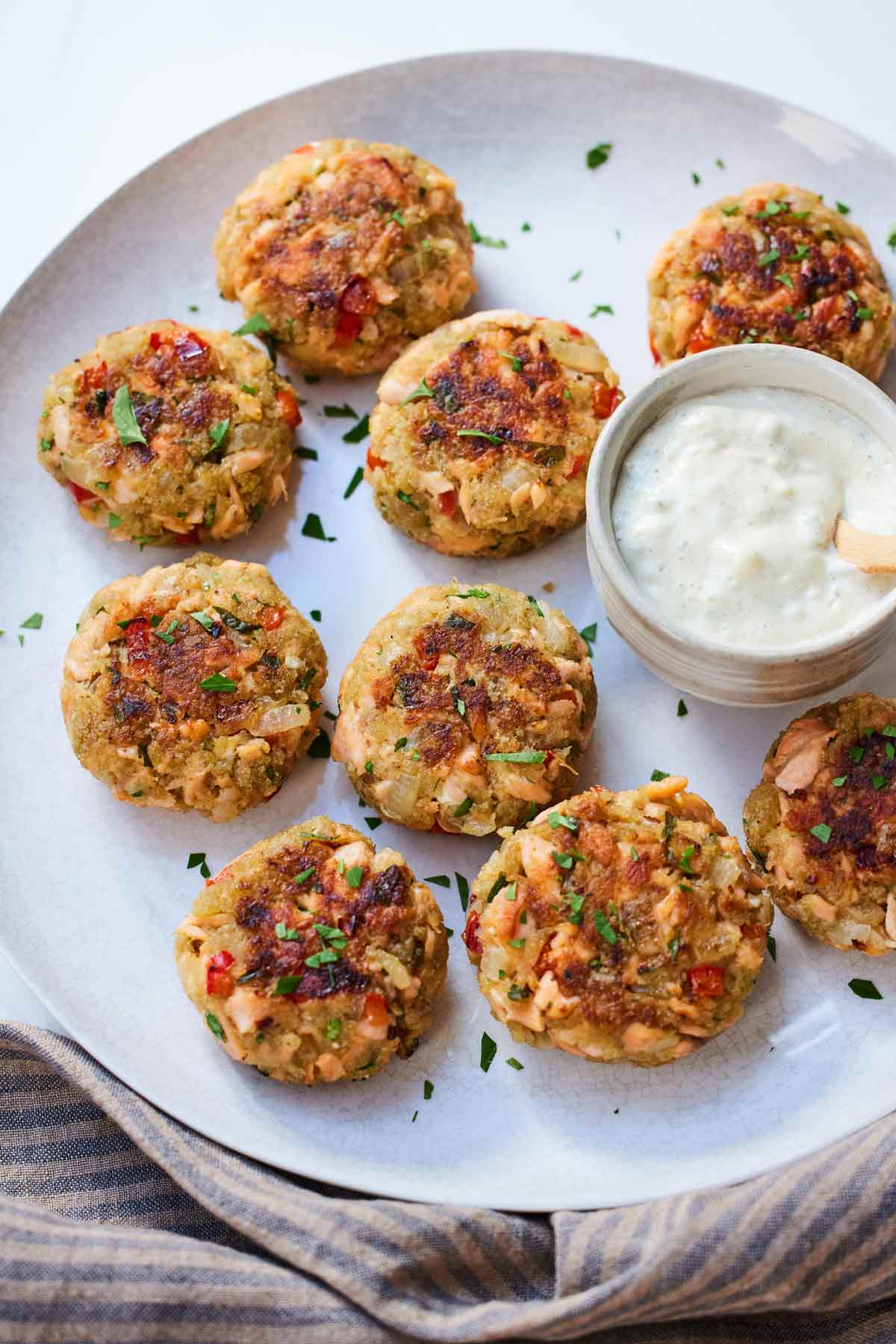

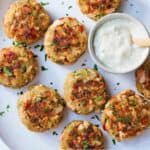
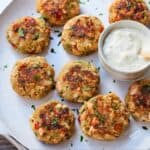
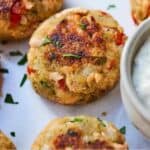
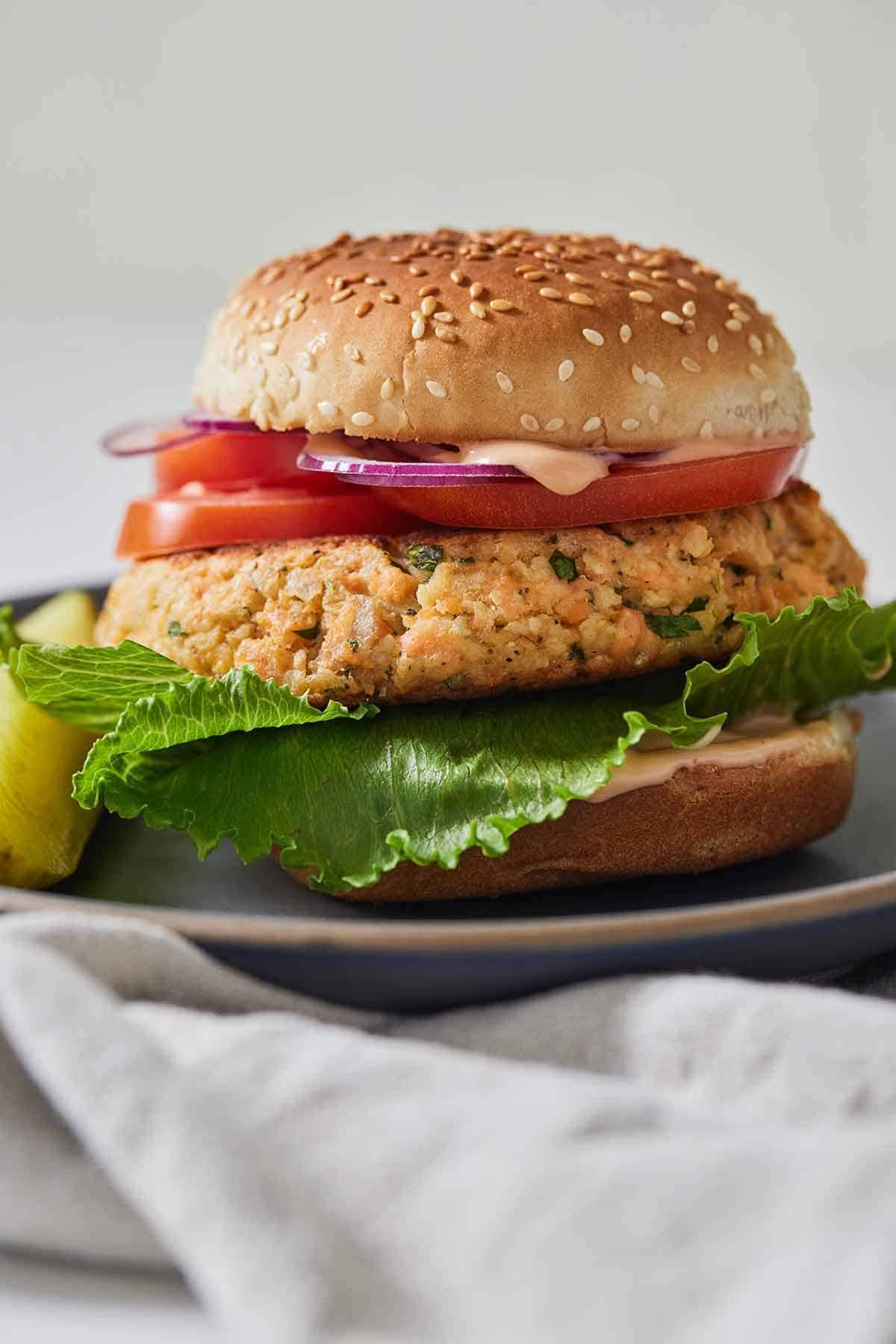
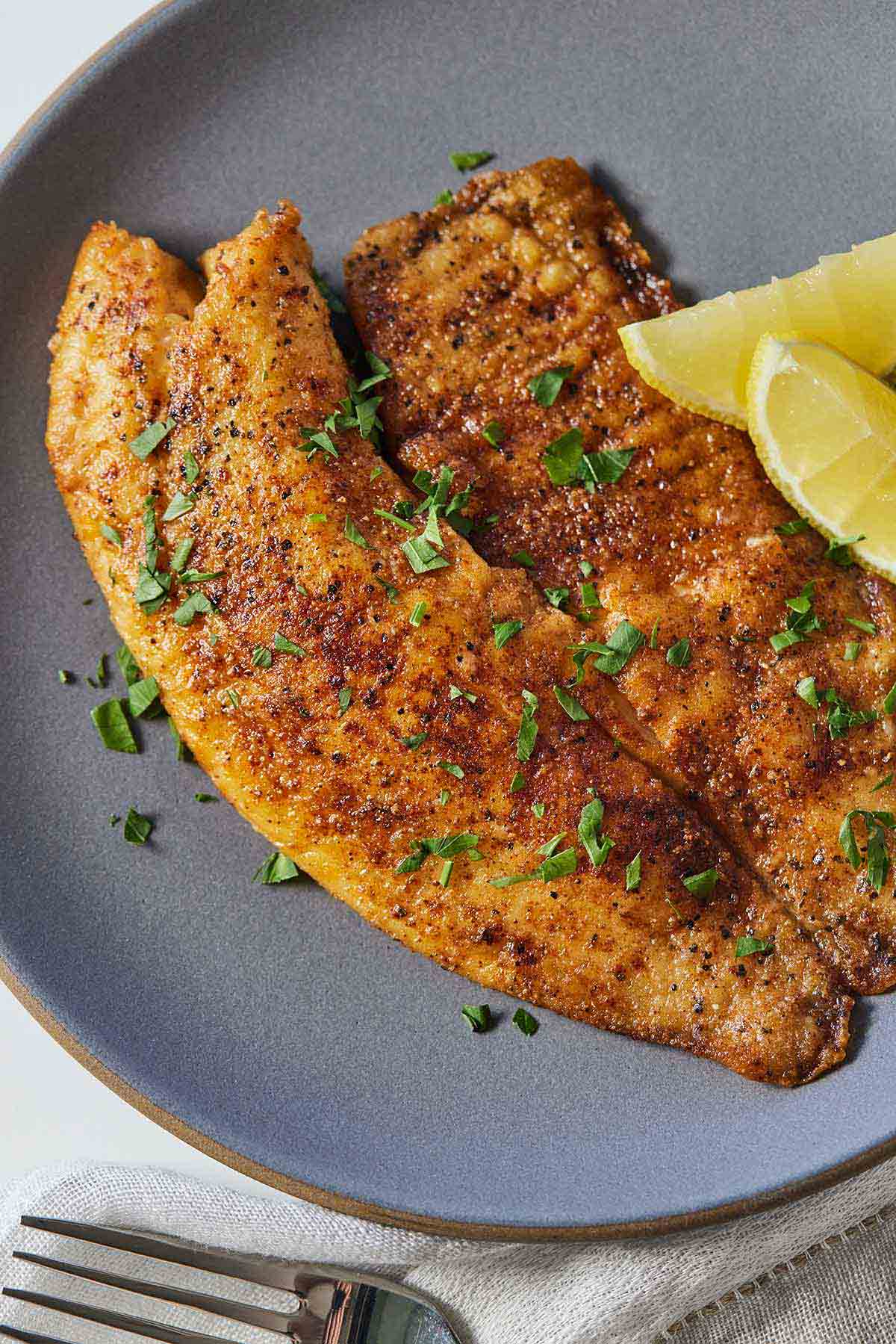
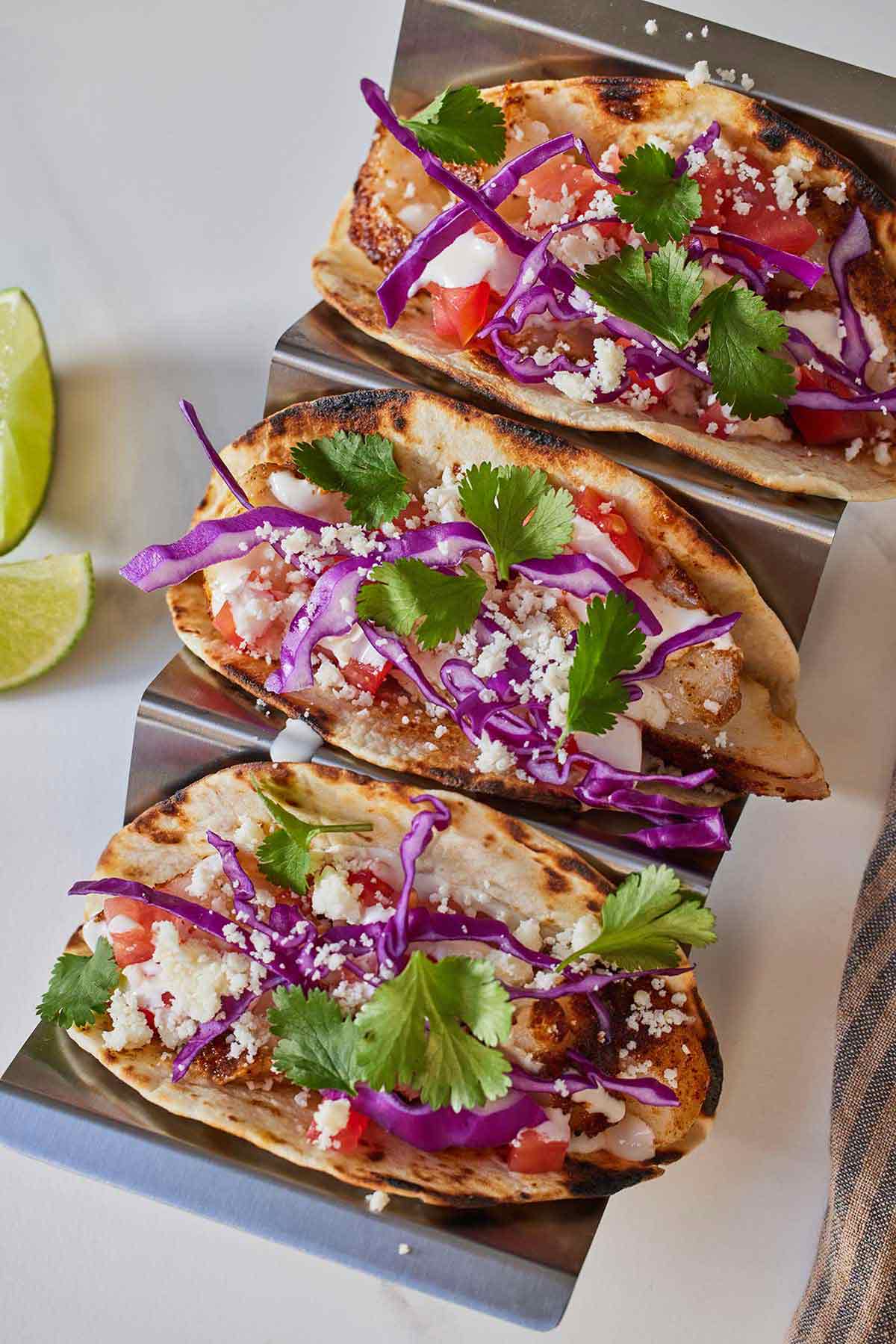
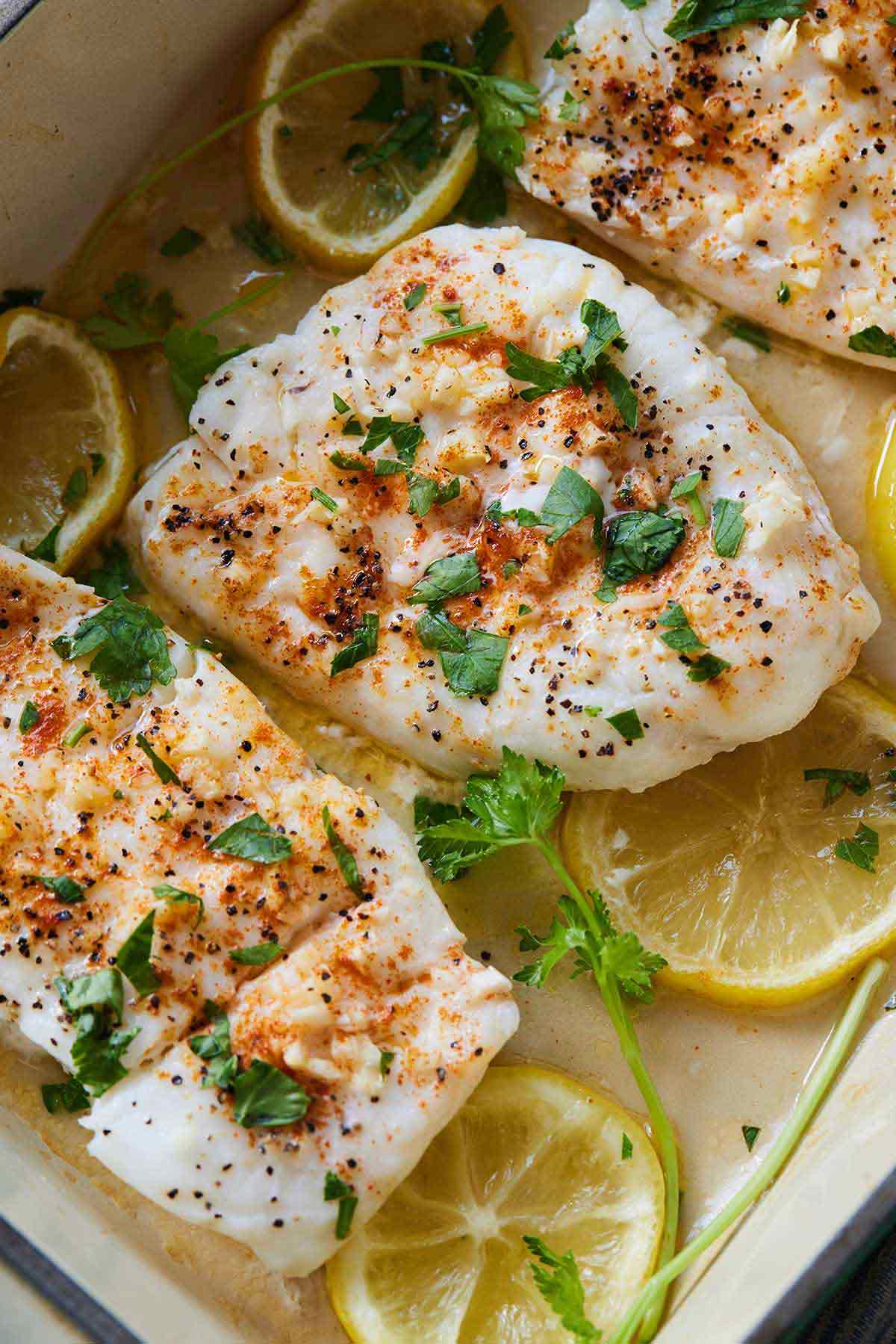
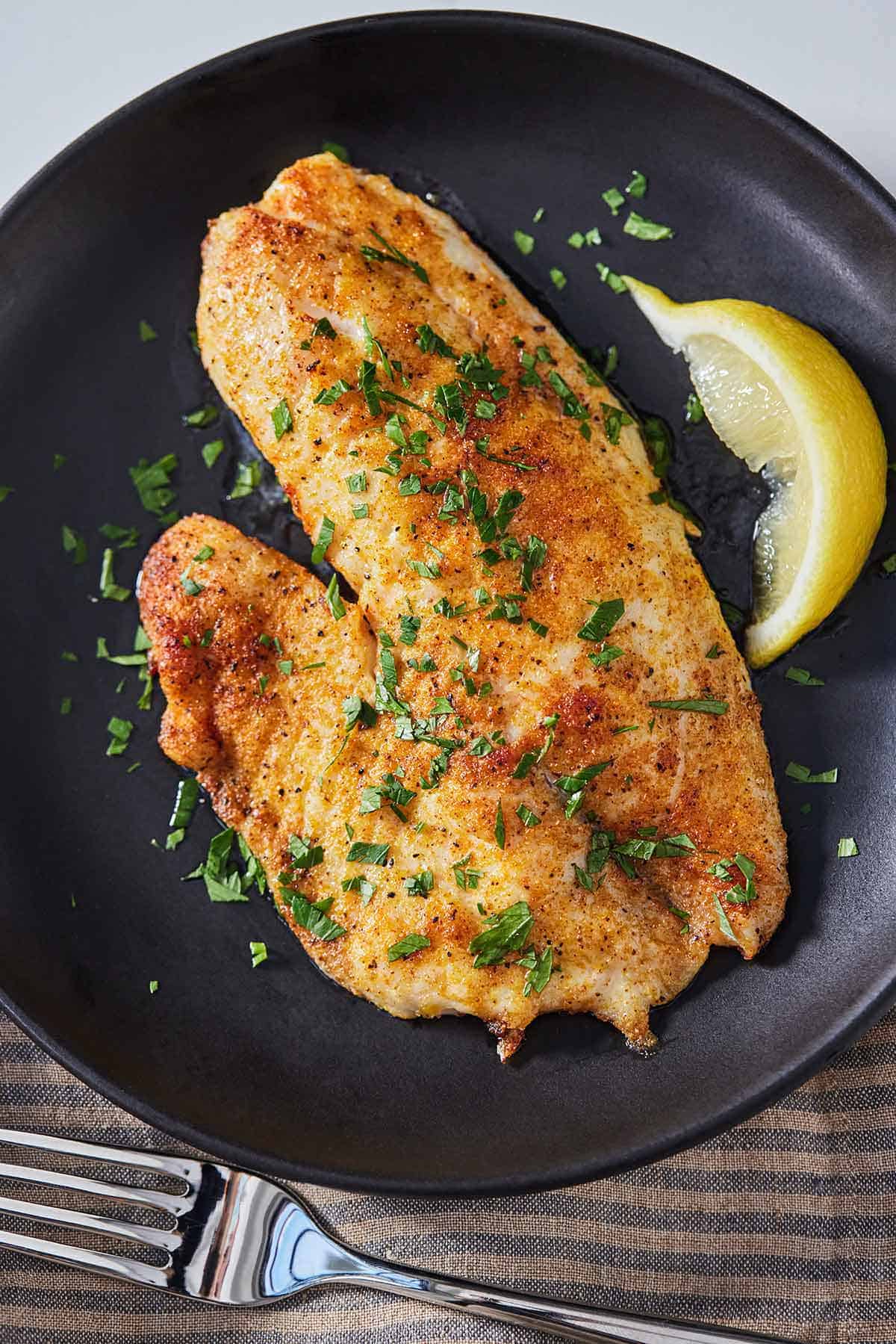
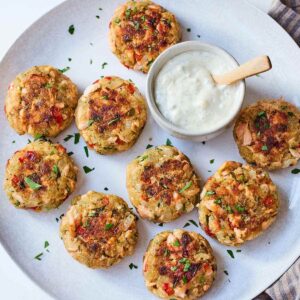
In regards to the salmon cakes that look amazing. Can you also provide the recipe for the dipping sauce?
Hi Pamela- try this: 1 cup vegan mayo,
2 tbsp sweet pickle relish, 1.5 tbsp minced onion, 2 tbsp lemon juice, Salt and pepper to taste